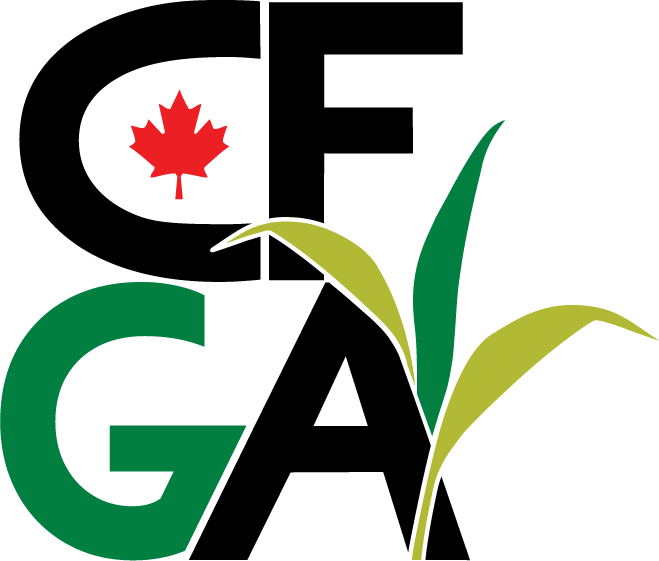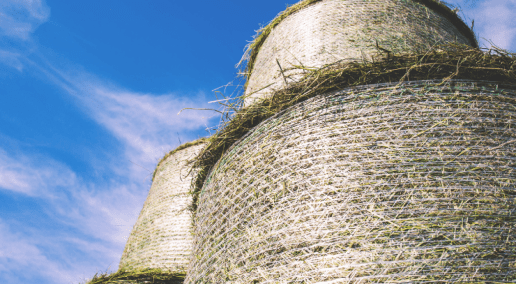During the CFGA’s 12th Annual Conference, Jason Weller discussed how a major agriculture value chain in the U.S. adopted a strategy and implementation plan for sector wide sustainability - From the Farm Gate to the Grocery Basket.
Jason is vice-president of Truterra, the sustainability business and subsidiary of Land O’Lakes, Inc. Jason Weller joined Land O’Lakes, Inc., in 2017 where he serves as vice-president of Truterra, leading the team that is generating conservation solutions for the farmer co-operative’s members and owners. He previously served as chief of USDA’s Natural Resources Conservation Service, and served in the U.S. House Appropriations Subcommittee on Agriculture, the U.S. House Budget Committee and in the White House Office of Management and Budget.
Land O’Lakes is a dairy cooperative that participates in carbon markets in the U.S. and Canada. They also provide water quality and supply chain incentives. Truterra, the sustainability business and subsidiary of Land O’Lakes, uses an Insights Engine and holistic approach to soil health and profitability of farms. This supports them to become carbon farmers and creates an annual crop of a certified carbon credit, which, at the time of the presentation in December 2021, was valued at $15 to $20 per ton (SOC) or approximately $3 to $14 per acre, and is expected to grow. Soil health best management practices (BMPs) increase the profitability, resilience and various other benefits on their own, including the carbon credit payments.
Dairy BMP and Data Processing for Strategies
In his presentation, René Lacroix discussed BMPs in dairy sector data management to inform and improve forage management systems.
René is a data valuation (business intelligence) analyst working for Valacta’s research and development team. René Lacroix was a research associate in the Dairy Information System group at McGill University for over 10 years, where he worked closely with PATLQ. He then worked as a planning analyst in the Office of Planning and Institutional Analysis.
Technologies provide great opportunities for smarter farming. More and more equipment at farms manages data, such as milking robots and MooCalving monitors. The dairy industry has been collecting data for decades, from simple milk weight and component analysis for milk fat in the 60s to balanced feed rations in the 90s and now the comprehensive central software, which provides performance reports using calving dates and production tracking. This improves herd performance and overall production.
In the 60s a dairy cow had 200 data points, now there are 30,000 data points. The goal is to get optimal value from these data points.
Decision Making Tools for Adoption of BMPs in Forage Systems Using AI, Mobilise Producers in Data Collection
Maxime Leduc’s presentation looked at using remote sensing to collect forage production data and procedures to help process and how to use this data in making forage management decisions over the long-term.
Maxime is the project manager of two important projects on alfalfa with the CFGA. He is also responsible for two other projects in veterinary science and sheep production. Maxime Leduc is the project manager of two important projects on alfalfa with the CFGA. In addition to these two projects, he is also responsible for two other projects in veterinary science and sheep production. He is currently course lecturer at UQAT and McGill University. As well, he is the co-owner of a sheep business with his parents.
He noted that there are currently barriers to using BMPs, including:
1) The cycle of production
Multi-year endeavours make results harder to determine.
2) Absence of good metrics.
This makes it impossible to complete five stages of adoption:
● become aware of a problem
● find different potential solutions
● evaluate different potential solutions
● make an informed choice
● implement the choice
3) Other barriers, including variables and conditions across Canada.
Improve Productivity in Context of Climate Change, Working with the Living Labs in Quebec
Martin Chantigny’s presentation gave an overview of the AAFC Living Lab project in Quebec: Co-developed commercial scale research with primary producers.
Martin is a researcher at Agriculture and Agri-Food Canada (AAFC). Martin Chantigny has been a researcher at Agriculture and Agri-Food Canada (AAFC) since 1997. He works mainly on evaluating and improving agricultural practices to maintain the productivity and health of agro-ecosystems in a context of climate change. More specifically, his work contributes to a better understanding of how to preserve and improve the health of soils and the environment in order to ensure a sustainable increase in agricultural productivity in Canada. Since 2019, he has been the scientific animator of the Living Laboratory of Quebec for AAFC.
Martin and AAFC aim to improve productivity in the context of climate change by working with the Living Labs in Quebec. Living Lab values involvement of all collaborators throughout the whole process. The research framework in agriculture is typically unidirectional and separates the consumer. This co-creative process includes users in the entire framework, which controls adoption issues. It’s co-developed, tested and used.
2018-2023 Living Labs Initiatives
AAFC created four Living Labs for climate change, water contamination and improving soil and water contamination. To expand this network in the next 10 years, AAFC aims to plan a Canadian network with Living Labs in each province and implement carbon sequestration and GHG reductions. This co-benefits biodiversity, water quality and soil health. Innovation Hub aims to share ideas and experiences, grow mutual respect and learning and find common language and solutions. It also aims to include L’Union des producteurs agricoles (UPA), farmers, Ducks Unlimited, invited experts, municipalities, First Nations and others in developing these goals.
By providing solutions to the climate change crisis, we can move to reduce the eight per cent of Canadian greenhouse gas emissions that agriculture provides. Immense carbon sequestration will help reach the target of limiting the global temperature increase by one and a half degrees.
Integrating data across the agriculture ecosystem, creates big data that uses AI to interpret performance reports and indicate where improvements can be made. These analyses provide performance descriptions, diagnoses and predictive indications and optimally provide prescriptive actions.
Collaboration with organisations globally facilitate data transfer and management. Governance of data is important. With producers at the centre of this, they must know how the data is being used. Producers autonomously need to be at the heart of management of data ownerships, who uses it and consent around its use.
The first project is implementing an AI-based decision-making tool to help maximise forage yield using BMPs and to collect data over three years across hundreds of farms.
The second project is to collect data with the help of a huge team of co-operators, researchers and agronomists, governments and universities, and using 240 farms across Quebec, Ontario, Manitoba, and Nova Scotia, over three years. Maxime’s team wants to collect data two times per year of soil and root analysis, cropping and manure application practices and field drainage. They will use this data to develop diagnostic tools to improve winter survival and persistence of alfalfa, using remote sensing for problems like if winter is rainy and acidic. They also want to identify various problems that contribute to poor winter survival and identify potential solutions and practices.
Quebec’s Living Lab already has farmers involved in improving practices. There are three co-development workshops with working plans, visits and research ongoing at each farm. With frequent meetings to transfer answers, and co-development workshops to improve practices, farmers can improve soil coverage, riparian zones, water management and animal production contaminant dispersion and revitalise indigenous species like sweetgrass and black ash.
How do we tackle the challenge of having data management systems adopted on-farm? We need to line up with a farm’s priorities and business plan and have advisors to offer advice on reporting and measuring.
Collective tools help groups of producers get together. Agriculture has evolved because of groups getting together. Digitalization creates dependency and has resulted in producers moving away/autonomy.
Small groups of producers can work to innovate and, in practice, can help in rapid progression of good practices.
There is importance in continuing to work as a team, and to adapt our techniques accordingly, and to compromise, to be responsible for everything we do together.
More information at:
Jason Weller
https://www.canadianfga.ca/staff/jason-weller-19/
René Lacroix
https://www.canadianfga.ca/staff/ren-lacroix-25/
Maxime Leduc
https://www.canadianfga.ca/staff/maxime-leduc-17/
Martin Chantigny
https://www.canadianfga.ca/staff/martin-chantigny-16/




Leave a Comment